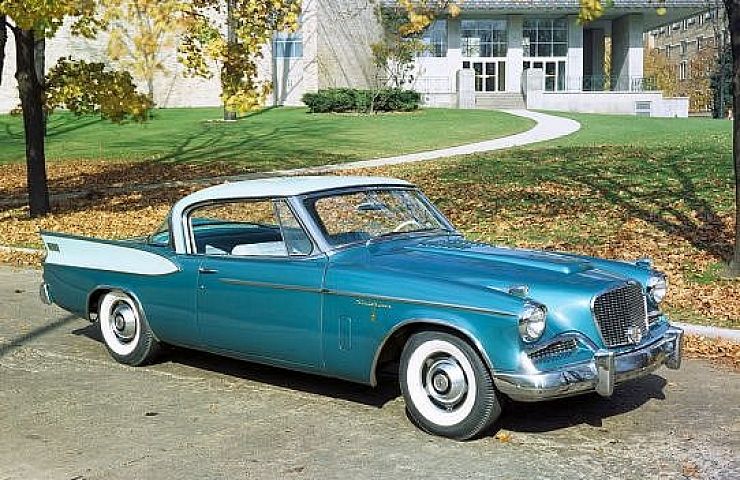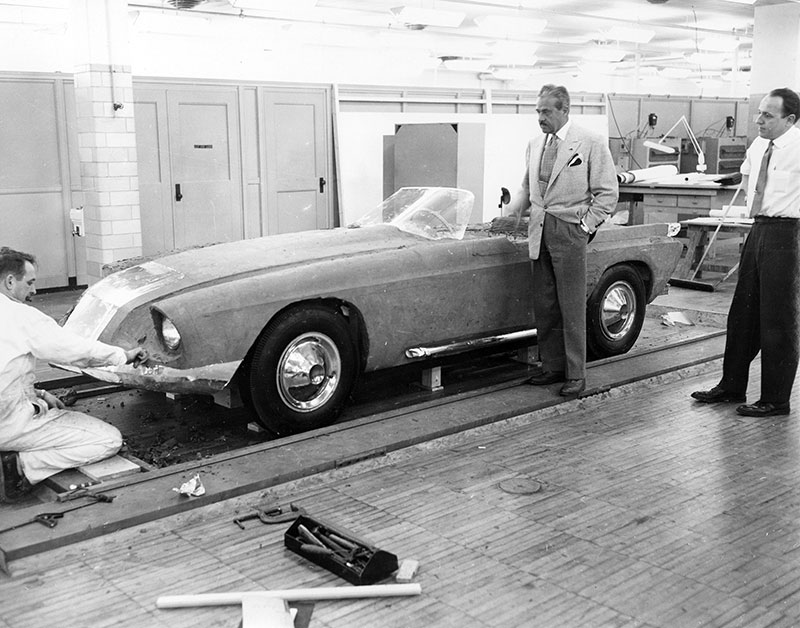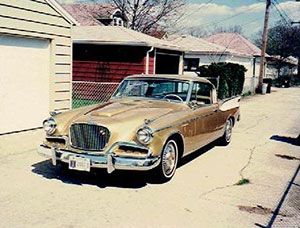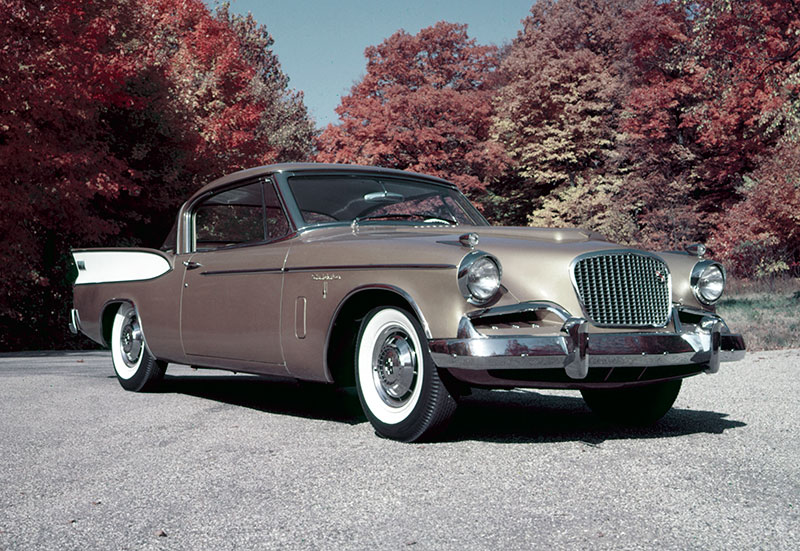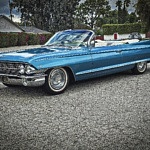It’s hard to believe that one of the most stylish, technologically advanced cars of the 1950s came from a company whose future was hanging by a thread. In 1956 Studebaker, the South Bend, Ind.-based manufacturer, emerged from a shaky merger with Packard to introduce the Golden Hawk: a top-of-the-line coupe it produced through 1958.
Styled by the brilliant Raymond Loewy and initially powered by Packard’s 352 cubic-inch V-8 engine—later models got a supercharged 289 CI Studebaker block—the Golden Hawk could be described as the first luxury muscle car. In fact, it became the dream car for a very young Roger Ebert, who recalled his first experience in a personal tribute he wrote in 2008.
In 1956, Ebert was working as a sales clerk at Johnston’s Sport Shop in his hometown of Champaign, Ill. At lunchtime he would walk down to the Chuck Wagon diner, passing Maxey Motors, a Studebaker-Packard dealer en route. It was in the dealership window that he first encountered the 1957 Studebaker Golden Hawk: whose lofty price tag was beyond a high school student’s meager wages.
Years later, while on a business trip to Hollywood, Ebert saw an ad for a Golden Hawk under restoration at a used car dealership in Santa Monica. Ebert bought the car and transported it to his house north of New Buffalo, Mich.
“Roger Ebert didn’t know cars but he knew the Studebaker Golden Hawk,” said Dan Jedlicka, Ebert’s colleague at the Chicago Sun-Times who bought the car from him. Jedlicka, former automotive columnist for the paper and a long-time classic car aficionado, saw the car in Ebert’s garage during a Fourth of July celebration.
“As big as the house was it only had a one car garage and since Ebert wasn’t driving the car, I think his wife wanted the Golden Hawk out of there,” said Jedlicka. Because the car had been sitting idle, the gasoline had turned to sludge and the tires were rotten. Jedlicka took the Golden Hawk to Larry Claypool, a restorer known for his work on Chevrolet Corvairs and Studebakers.
Claypool drained and cleaned the gas tank and replaced the dry-rotted tires with a set of new radials. The McCulloch supercharger needed rebuilding, as did the optional overdrive on the three-speed manual transmission.
The car’s interior was clean, requiring little restoration. Claypool rebuilt the tachometer drive and replaced it in the Hawk’s beautiful machine-tooled dashboard inspired by Loewy’s earlier Starliner coupe. Other repairs included the exhaust ports, replacing an antenna and putting on the factory correct side mirrors.
“With the late-model radials, the car’s performance felt very modern, much better than most cars I’d driven from the 1950s,” said Jedlicka. “It had a long wheelbase, but the steering was good and with the 289 engine it was very well balanced. The Packard engine on the ’56 models was too big and it made the car nose-heavy. I told Roger Ebert that he had no idea how good his car actually was.”
Jedlicka eventually sold the car to a collector in south Chicago, but having owned several Avantis, he’s a lifelong fan of the marque.
Nuts and Bolts
Prices for Golden Hawks have escalated in recent years, with a top-of-the-line ’57 model now valued well above $100,000. 1956 models are the most affordable, since collectors prefer the 1957 and 1958 cars with the smaller engine. Expect to pay about $53,000 for a 1957 in reasonable condition. A similar condition 1958 Golden Hawk goes for about $44,000.
“The ’57 and ’58 cars had larger fins than the ’56 so they are flashier and more desirable to collectors,” said Jedlicka. The 1956 car came exclusively with the three-speed manual column shifter. An automatic transmission was optional in 1957 and ’58.
Since the Golden Hawk is an orphan car, the Studebaker Club is the best source for information on restoration services and NOS parts. If the car has been sitting, expect repairs such as the supercharger rebuild simply because blowers that sit idle get dry and break down.
The Golden Hawk was the end of an era for Studebaker. In 1960 the automaker introduced the Lark: a small sedan whose affordable price tag bought the company a few more years. Raymond Loewy would produce one more landmark design: the aerodynamic Avanti that Andy Granatelli drove to a new land speed record at Bonneville. Studebaker is no more, but its timeless designs continue to delight auto aficionados to this day.

